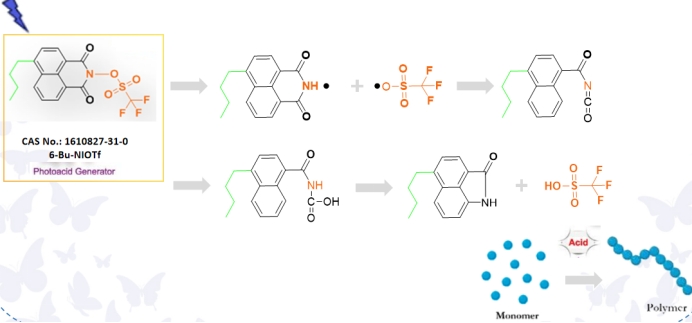Product Category
- Medical Protection
- Natural extracts
- Natural pigments
- Protein powder
- Vitamin
- Carbohydrate and Derivatives
- Amino acids
- Enzyme
- Preservatives
- Consumables
- Hemp and related products
- API Intermediates
- Special Chemicals
- Flavors&fragrances
- Electronic Chemicals
- Nutrition and Health
- -VK2 MK-4
- -VK2 MK-7
- -Plant Extracts
- -Functional Saccharides
- -Amino Acids and Derivs
- -Functional Proteins
- -Coenzymes
- -Vitamins and Derivs
- -Minerals
- -Others
- Cosmetic Ingredients
- Excipients
- Food Additives
- Others
You are here:HOME>Products>Electronic Chemicals>6-Butyl-N-hydroxynaphthalimide trifluoromethanesulfonic acid
6-Butyl-N-hydroxynaphthalimide trifluoromethanesulfonic acid
- Code:
- Grade:Electronic Grade. 99% Purify
- CAS Number 1610827-31-0
- Package:100mg, 1g, 5g
- Function: Cationic photoinitiator and nonionic photoacid generator used in surface modification of polymers, preparation of films, and other applications.
- Application: Mainly employed for surface modification of polymers and in the preparation of films.
- Tags: Featured products
Customers Also Viewed






